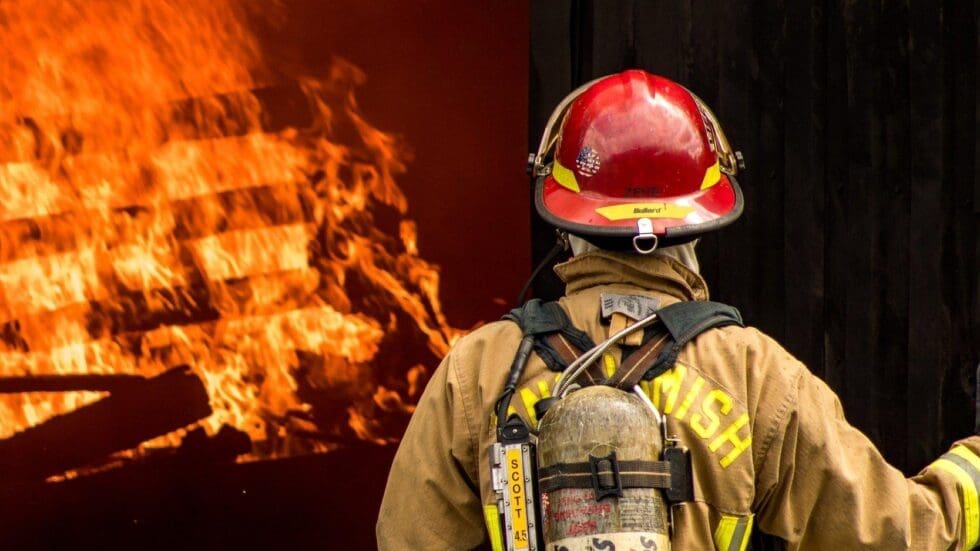In the realm of social justice and rehabilitation, a question emerges: Can incarcerated firefighters successfully transition into conventional roles as fire service professionals upon their release? This inquiry invites a deeper exploration of the socio-cultural paradigms that influence perceptions and opportunities for incarcerated individuals. Given the complex interplay between criminal justice, public perception, and rehabilitation, the concept of second chances remains a pressing issue.
The phenomenon of incarcerated individuals serving as firefighters is a distinctive aspect of the American penal system, often rooted in the need for wildfire management and natural disaster response. These programs offer a modicum of training and skill development, often deemed essential for reintegration into society. However, the cultural relativism perspective necessitates an understanding of varying societal values and norms surrounding punishment and rehabilitation.
At its core, cultural relativism asserts that beliefs and practices can only be understood within their specific cultural context. Thus, the cultural narratives surrounding incarcerated individuals who serve as firefighters can shape public attitudes toward their potential reintegration. The social perception of these individuals — shaped by factors such as media representation, community values, and personal experiences — contributes significantly to the discourse on their second chances.
One of the primary challenges faced by formerly incarcerated firefighters lies in the stigma that accompanies incarceration. Despite having undergone rigorous training and demonstrated commendable skills in mitigating wildfires, individuals who have served time often encounter skepticism and prejudice in their pursuit of post-incarceration employment. When juxtaposed with traditional firefighters, the perceived value of their experience is frequently diminished, raising inquiries about societal priorities in evaluating meritocracies.
Moreover, as the public becomes increasingly aware of issues such as mass incarceration and its disparate impacts on marginalized communities, a tension emerges between the desire for rehabilitation and the impulse for societal retribution. This recalibration of values challenges static perceptions of criminality and rehabilitation. Cultural relativism prompts an examination of whether the societal constructs surrounding crime and punishment can evolve to embrace a more forgiving posture toward those seeking redemption.
To illuminate the intersectionality of cultural narratives in this discourse, consider the role of local communities in shaping the opportunities available to formerly incarcerated individuals. Communities that prioritize restorative justice frameworks often cultivate an atmosphere conducive to successful reintegration. Through mentorship programs, job fairs, and community service requirements, these communities foster support systems that address barriers stemming from incarceration-related stigma.
In contrast, communities steeped in retributive justice ideology may perpetuate cycles of disenfranchisement and exclusion. Employers within these contexts may be disinclined to hire individuals with criminal records, notwithstanding their practical training and demonstrated competencies. Such disparities underscore the necessity of championing grassroots initiatives aimed at fostering equitable treatment for all regardless of their past.
Furthermore, the inherent paradox of employing incarcerated individuals as firefighters reflects broader themes of commodification within the justice system. While these individuals contribute meaningfully to public safety and environmental conservation, the financial savings and labor derived from their work raise ethical questions about the commoditization of human labor in punitive contexts. Are these programs genuinely designed to rehabilitate, or do they more closely resemble exploitative labor practices under the guise of skill development?
The emotional toll of navigating societal bias and structural barriers cannot be overlooked. Transitioning from a penal institution to a professional environment is laden with challenges. Incarcerated firefighters, who may have developed camaraderie and a sense of purpose within their firefighter cadre, often face isolation once they return to civilian life. Personal narratives frequently reveal the struggles of finding direction while simultaneously battling self-doubt, which can be exacerbated by external judgments. Encouraging community-based support and representation is essential for facilitating healing and empowerment in these transitional periods.
It is essential to consider the role of policy reform in shaping the landscape of opportunities available to formerly incarcerated firefighters. Legislative advocacy focused on the “Ban the Box” movement, which seeks to eliminate discrimination based on criminal history in hiring practices, is of particular importance. By implementing such reforms, society can take a significant step toward dismantling the barriers that contribute to systemic disenfranchisement.
In sum, the transition from incarcerated firefighter to professional firefighter exemplifies a rich tapestry of challenges beset by societal perceptions and structural impediments. Cultural relativism enhances our understanding of these dynamics, providing a contextual framework for evaluating the interplay between rehabilitative efforts and societal attitudes. Ultimately, fostering a culture of second chances necessitates a collective reexamination of existing norms and values, shaping a more inclusive narrative wherein all individuals, irrespective of their past, can contribute successfully to their communities. Embracing the notion of second chances is not merely an act of kindness; rather, it is a testament to the belief in human potential and the possibility of redemption.
